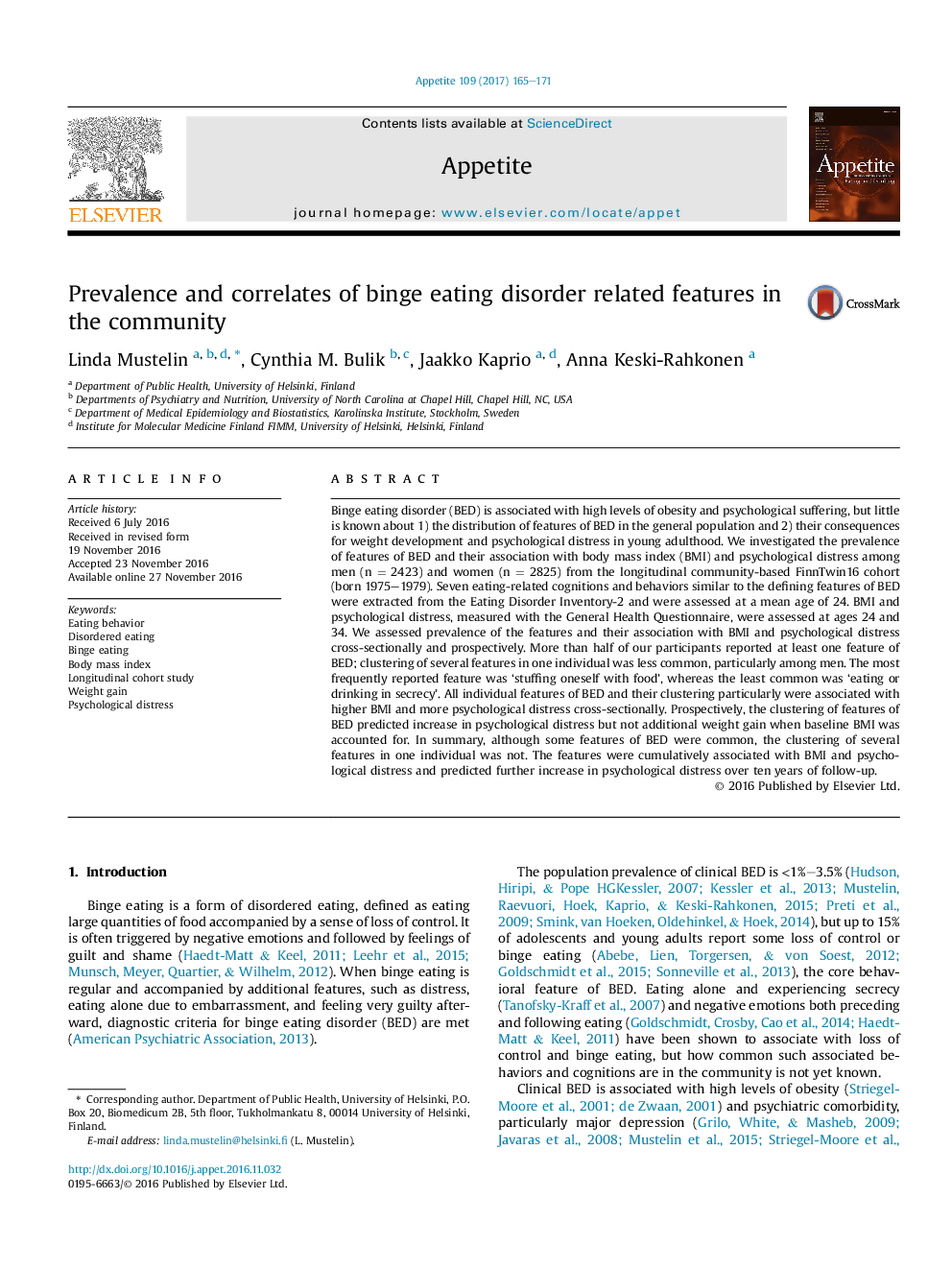| کد مقاله | کد نشریه | سال انتشار | مقاله انگلیسی | نسخه تمام متن |
|---|---|---|---|---|
| 5044374 | 1475371 | 2017 | 7 صفحه PDF | دانلود رایگان |
Binge eating disorder (BED) is associated with high levels of obesity and psychological suffering, but little is known about 1) the distribution of features of BED in the general population and 2) their consequences for weight development and psychological distress in young adulthood. We investigated the prevalence of features of BED and their association with body mass index (BMI) and psychological distress among men (n = 2423) and women (n = 2825) from the longitudinal community-based FinnTwin16 cohort (born 1975-1979). Seven eating-related cognitions and behaviors similar to the defining features of BED were extracted from the Eating Disorder Inventory-2 and were assessed at a mean age of 24. BMI and psychological distress, measured with the General Health Questionnaire, were assessed at ages 24 and 34. We assessed prevalence of the features and their association with BMI and psychological distress cross-sectionally and prospectively. More than half of our participants reported at least one feature of BED; clustering of several features in one individual was less common, particularly among men. The most frequently reported feature was 'stuffing oneself with food', whereas the least common was 'eating or drinking in secrecy'. All individual features of BED and their clustering particularly were associated with higher BMI and more psychological distress cross-sectionally. Prospectively, the clustering of features of BED predicted increase in psychological distress but not additional weight gain when baseline BMI was accounted for. In summary, although some features of BED were common, the clustering of several features in one individual was not. The features were cumulatively associated with BMI and psychological distress and predicted further increase in psychological distress over ten years of follow-up.
Journal: Appetite - Volume 109, 1 February 2017, Pages 165-171
